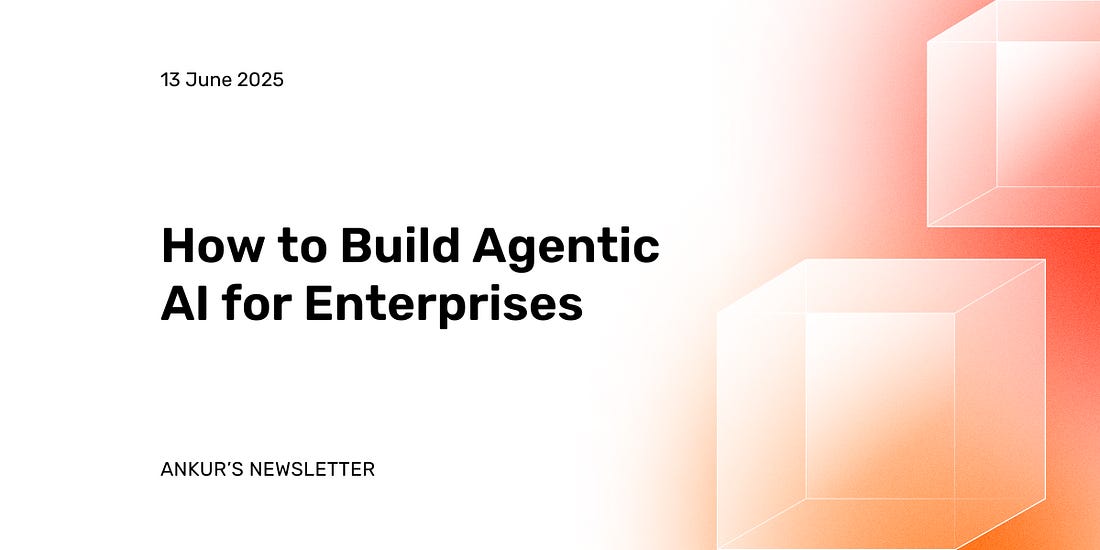|
 |
How to Build Agentic AI for Enterprises
Building agentic AI systems for enterprises can be an engineering nightmare. Learn what techniques, principles, and methods help.
Key Takeaways
Agentic AI replaces stateless ML with stateful architectures using vector DBs/RAG for enterprise-scale context tracking.
Multi-agent systems reduce IT incident resolution time by 80% through specialized security/remediation/compliance agents.
Supply chain agents balance cost/sustainability via ERP API integration and reinforcement learning conflict resolution.
Production systems require governance layers with ABAC controls and circuit breakers for HIPAA/SOC2 compliance.
Successful implementation demands phased rollouts: process mining → bounded pilots → Zero Trust scaling.
In 2023, I started Multimodal, a Generative AI company that helps organizations automate complex, knowledge-based workflows using AI Agents. Check it out here.
Building agentic workflows for enterprises comes with several engineering challenges. Everything from model to workflow selection can seem daunting, especially with continuous updates to frameworks and models. In this article, I will break down the key things you should keep in mind if you’re spearheading an agentic AI initiative in an enterprise.
The Agentic Paradigm Shift: Technical Differentiation
Agentic AI systems mark a fundamental departure from traditional machine learning pipelines through three core architectural shifts. First, statefulness replaces stateless inference - where conventional ML models process isolated data batches, agentic architectures maintain persistent context across interactions. This enables continuity in complex workflows like supply chain management, where autonomous agents track progress across multiple systems while protecting sensitive data.
Second, multi-agent orchestration supersedes monolithic models. OpenAI's framework exemplifies this by separating roles into specialized AI agents (analysis, decision, execution) that collaborate dynamically. Unlike single-model approaches struggling with vast amounts of data, these distributed systems allocate specific tasks to optimized AI models - a security agent handles access controls while a logistics agent processes real-time sensor data.
Third, the autonomy spectrum evolves from rigid rule-based delegation to LLM-driven goal decomposition. While early robotic process automation required constant human input for task definitions, modern agentic systems use reinforcement learning to break high-level objectives into executable steps. This shift enables AI-powered agents to handle complex scenarios like dynamic problem-solving in software development pipelines while maintaining human oversight through circuit breaker protocols.
Key Technical Components
Modern agentic architectures combine three critical elements:
Hybrid Memory Systems
Context window limitations in large language models are overcome through vector databases + RAG patterns
Enables intelligent systems to process enterprise-scale data while tracking progress across interactions
Expanded Action Spaces
API toolchains integrated with code execution engines
Autonomous agents execute tasks ranging from basic interactions to complex processes like automating decision-making in patient data analysis
Resilience Frameworks
Circuit breakers halt unintended consequences in real-time
Human-in-the-loop escalation paths for high-stakes scenarios (financial approvals, medical diagnoses)
These components enable agentic AI to streamline software development, optimize supply chains, and improve customer satisfaction while maintaining rigorous testing protocols. By integrating with existing enterprise systems through secure access controls, these architectures balance operational efficiency with robust data protection - a critical advancement over earlier generative AI solutions.


